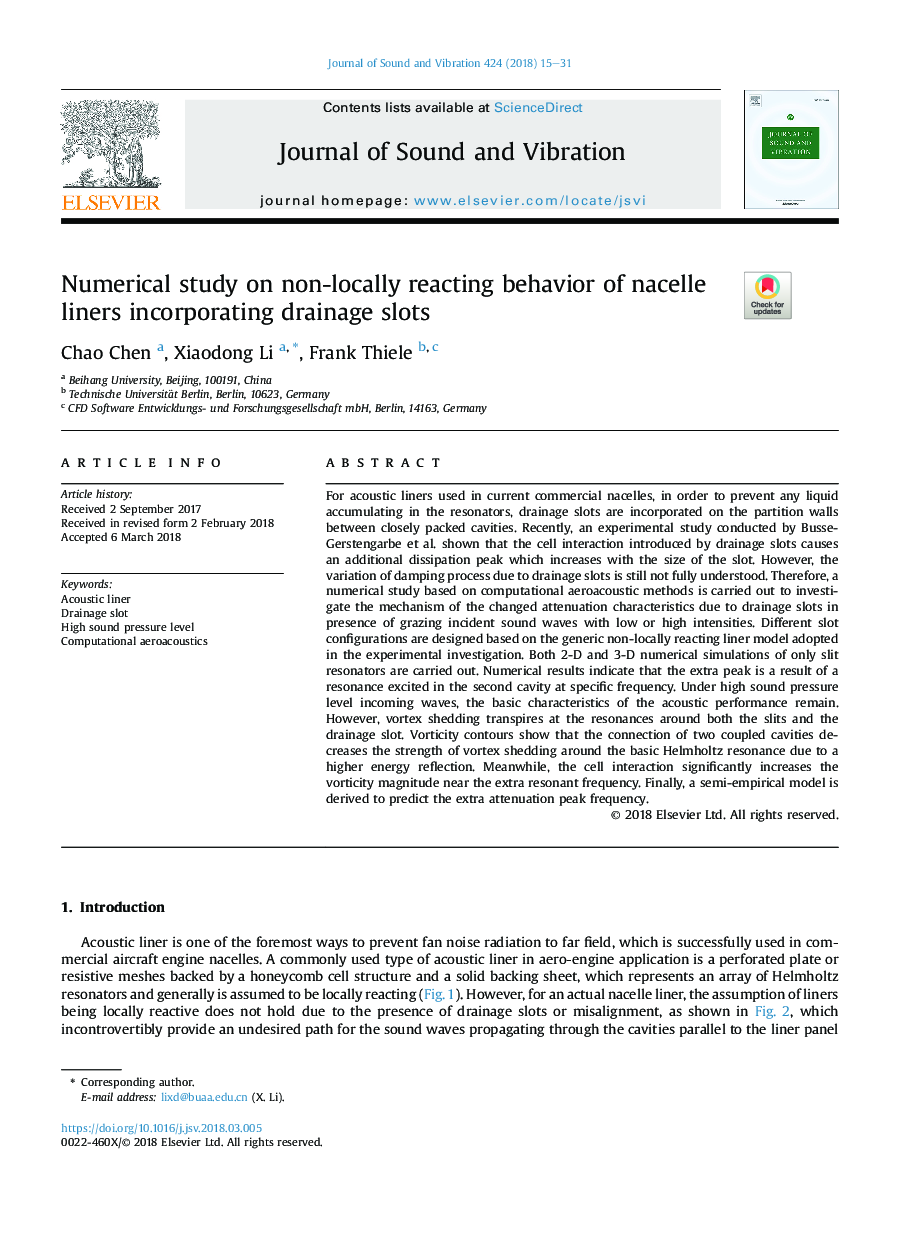| Article ID | Journal | Published Year | Pages | File Type |
|---|---|---|---|---|
| 6753161 | Journal of Sound and Vibration | 2018 | 17 Pages |
Abstract
For acoustic liners used in current commercial nacelles, in order to prevent any liquid accumulating in the resonators, drainage slots are incorporated on the partition walls between closely packed cavities. Recently, an experimental study conducted by Busse-Gerstengarbe et al. shown that the cell interaction introduced by drainage slots causes an additional dissipation peak which increases with the size of the slot. However, the variation of damping process due to drainage slots is still not fully understood. Therefore, a numerical study based on computational aeroacoustic methods is carried out to investigate the mechanism of the changed attenuation characteristics due to drainage slots in presence of grazing incident sound waves with low or high intensities. Different slot configurations are designed based on the generic non-locally reacting liner model adopted in the experimental investigation. Both 2-D and 3-D numerical simulations of only slit resonators are carried out. Numerical results indicate that the extra peak is a result of a resonance excited in the second cavity at specific frequency. Under high sound pressure level incoming waves, the basic characteristics of the acoustic performance remain. However, vortex shedding transpires at the resonances around both the slits and the drainage slot. Vorticity contours show that the connection of two coupled cavities decreases the strength of vortex shedding around the basic Helmholtz resonance due to a higher energy reflection. Meanwhile, the cell interaction significantly increases the vorticity magnitude near the extra resonant frequency. Finally, a semi-empirical model is derived to predict the extra attenuation peak frequency.
Related Topics
Physical Sciences and Engineering
Engineering
Civil and Structural Engineering
Authors
Chao Chen, Xiaodong Li, Frank Thiele,
